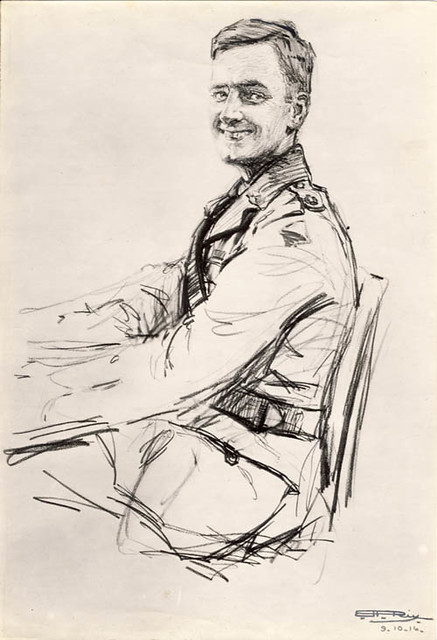Paris to Monaro: Pleasures from the studio of Hilda Rix Nicholas
National Portrait Gallery (May - August 2013)
| Pied Piper (1911) |
Hilda Rix Nicholas is known for many things in the
world of art, not least her war paintings. These are deliberately excluded from
this exhibition which focuses on her standing as a ‘female’ artist. It
highlights her imagination linked with a practical mind, resulting in intricate
costume designs, images of her son in every possible guise, and a love of
colour and clothing.
Born in Ballarat in
1884, Emily Hilda Rix left Australia in 1907 and travelled with her mother and
sister to London. She studied at the New Art School and then the Académie Delecluse in Paris. With her sister, Elsie, she spent time in
Tangier, Morocco, where she made many striking portraits and sketches,
reflecting her love of light and vibrancy. One of these paintings, Grand Marché, Tanger, was bought by the French government after an exhibition.
| Marchands du charbons de bois (Charcoal sellers) (1912) |
| The Well in the Blue, Arab Quarters (1914) |
In 1916 she met and married Australian soldier, Major
George Matson Nicholas DSO. He died within weeks leading a battalion in France.
She drew charcoal and pastel on paper portraits of George and his two brothers,
Frank and Athol; the one of her husband is particularly remarkable and the
catalogue notes that the brothers evoke the Australian soldier of legend; “raffish,
iconoclastic, and proud all at once”.
 |
| George Nicholas (1916) |
Also during the First World War, she lost her sister
and mother to typhoid fever. With amazing positivity, she continued to design
and draw costumes for a matinee fundraiser for the Anzac Club and Buffet in
1917 – the exhibition includes her designs for magpie, wool, cheese, gold, gum
blossom and warratah.
Hilda Rix Nicholas (as she now signed her paintings)
returned to Australia in 1918 and settled in Mosman by Sydney Harbour, where
she lived among ‘arty-party-loving people’. She made costumes for parties and illustrations
for fairytales – Mary Mary; Simple Simon; Jack and Jill; Little Miss Muffet;
Mother Hubbard; Pied Piper etc.
In 1928 she married Edgar Wright, grandson of James
Wright – first magistrate of Queanbeyan and pioneer white settler of Lanyon,
Cuppacumbalong and Booroomba in the Canberra region. Edgar was severely injured
at Passchendaele (buried in the earth by one blast and regurgitated by another
explosion). He was repatriated and took over the family farm. The Fleece is a fabulous study of her
husband Edgar as he goes about his business.
The Fleece (1944)
|
| The Shearers (1922-23) |
At
Knockalong, Hilda Rix Nicholas had a studio built to her specifications, which
was completed in 1930. It was French provincial in style with a broad
mediaeval-style fireplace, huge windows, soaring ceiling, a loft and a stage.
It is recreated in this exhibition and furnished with mementoes from foreign
lands: robes, clogs, vests, bags, belts, rugs, slippers, pots and plates, and
paintings.
It is a treat to see these artefacts
collected here, along with the pictorial representations of them. Among the
clothes which she loved and collected in a trunk, are a Chinese robe and
Spanish shawl that she painted with a meticulous eye to the expansive colours
and design.
When she was 46, Hilda had a son, Rix, who became the
focus of her life. She loved to tell him stories and play games with him,
making wire and wadding minikins for their entertainment. She made portraits of
Rix in every aspect of life: as a soldier, scout and shepherd among other
things.
| Some of the minikins Hilda made for her son, Rix |
She loved her garden and the natural surrounds,
painting them with bright blue skies and Pissaro/ Cezanne-like colours. The style
may evoke French Impressionism, but the eucalypts are pure Australia.
Spring in my garden, Knockalong (1940)
| Country Garden, Knockalong (1945) |
Hilda
always loved horses and riding, and many of her paintings feature Rix’s
governess and jillaroos as models.
| Bringing in the Sheep (1936) |
| The Fair Musterer (1935) |
A
neighbour described Autumn evening’s
golden glow as combining Hilda’s favourite subjects: humans, horses, flower
garden and the Monaro landscape brought together on one large, joyously vivid
canvas.
No comments:
Post a Comment